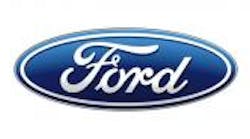“The fact that the 2010 Taurus and 2009 F-150 are up to 12% and 17% respectively better on fuel economy than their 2004 predecessors isn't due to one ‘silver bullet’ solution but a host of vehicle enhancements, including aerodynamic refinements, weight efficiency and mechanical improvements.” –Derrick Kuzak, group vp-global product development for Ford Motor Co.
The connections between cars and light trucks to the big rig world are legion. Not only do they share space on the same ribbons of asphalt and concrete snaking hither and yon across the U.S., they also share the same source of fuel (predominantly petroleum) and rely on the same engineering principles to ensure reliability, durability, consistency of operation, and fuel efficiency – among many other characteristics, to be sure.
So it’s been interesting to watch automakers engage in what I term a “bit by bit” retooling of their product lines in an effort to squeeze every little joule of energy they can from their vehicles. And this effort is not focused on just one area, mind you; not a quest to find a single “silver bullet” Derrick Kuzak, Ford’s group vp-global product development, referred to in his quote above.
Every component, every nut and bolt, is being closely examined on cars and light trucks these days in order to make them as efficient as possible. And it’s an engineering philosophy that is also being shared on the heavy-duty side of the ledger as commercial truck builders are engaged in the very same sorts of retooling as well.
Let’s focus on Ford in this post, starting with its powertrain improvements, which it says are a big difference maker. The company is going to a new six-speed automatic transmission, which offers a wider gear span than four-speed transmissions, to give its engineers the flexibility to tune the powertrain for greater responsiveness in low gears and better fuel economy in taller gears. The new double-overdrive gearbox is designed to contribute up to 4% fuel economy improvement and Ford is committed to making almost 100% of its transmissions to be these six-speed gearboxes by 2013.
Then there’s Ford’s new “EcoBoost” four-cylinder gasoline engine platform that uses turbocharged direct-injection technology for up to 20% better fuel economy, 15% fewer carbon dioxide (CO2) emissions and performance equal or better than larger-displacement engines. By 2013, Ford will offer EcoBoost engines in 90% of its product lineup with annual volumes targeted at 1.3 million units globally.
Aerodynamics is another big factor, as the ease with which a vehicle moves through air greatly influences its fuel efficiency, says Ford. The company notes that it engineers use computer modeling and wind tunnel testing to painstakingly tweak vehicle designs millimeter by millimeter to get the best possible aerodynamics – and the energy savings can be significant, for a 10% reduction in aerodynamic drag increases fuel economy by approximately 1% for cars and approximately 2% for light trucks with conventional internal combustion engines.
For example, the 2010 Fusion S achieved a 34 mpg highway rating in part because it is 8%more aerodynamically efficient than the outgoing model.
Reducing vehicle weight also is another critical part of the fuel economy puzzle, for every 10% reduction in weight improves fuel efficiency by an estimated 3%. According to a recent study, replacing heavier materials with lightweight materials is nearly as important as hybrid technology for automakers to meet the expected increase in the One National Program regulations by 2016, Ford says.
As a result, the automaker is increasingly using light-gauge, high-strength steel and lightweight materials such as aluminum and magnesium to meet weight reduction goals, shaving anywhere from 250 pounds to as much as 750 pounds off its vehicle platforms.
In turn, weight savings in body and structural materials allow for the use of smaller-displacement engines and lighter-weight suspensions and chassis components, Ford says.
Then there’s energy management. Ford aims to eliminate what it calls “energy waste” in every vehicle system, even in such mundane components as power steering.
Ford's new Electric Power Assist Steering (EPAS), for example, can improve fuel economy up to 3%, saving fuel primarily because the steering system is powered by an electric motor connected to the vehicle's battery, as opposed to engine-mounted hydraulic pump steering systems. By 2012 Ford plans to fit nearly 90% of its Ford, Lincoln and Mercury product lineup with EPAS.
“The progress we’ve made during the past few years reflects an engineering philosophy that every joule of energy gained through incremental improvement is precious,” says Kuzak (seen here at left).
This focus is part of what he calls a “systems approach” to manage vehicle energy, implementing a variety of design and engineering solutions to improve fuel economy by 1% or more.
"Whether we're reducing wind drag, eliminating engine-driven power steering pumps or switching to low-friction engine oil, this attention to every detail and these small improvements collectively deliver significant fuel economy gains for our customers,” he says.
Just goes to show that make a host of tiny improvements here and there on a vehicle – no mater the size – can reap some big rewards when collectively applied.







